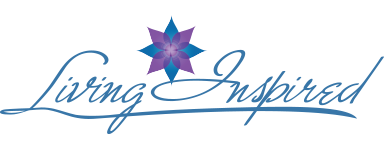After decades of often disputed validity, the effectiveness of Reiki, a holistic energy treatment is gaining new respect within the medical community. Not only are highly reputable medical facilities throughout the U.S. offering patients alternative healing programs such as Reiki, those facilities are analyzing the benefits of their programs and are submitting them for review and compilation. The results are nothing short of remarkable. Today, Reiki is offered free of charge in more than 800 American Hospitals as a means to accelerate the healing process and to alleviate pain.
There’s never been a comprehensive list of controlled, evidence-based research that was accessible to the holistic, medical, and scientific communities. It wasn’t until 2005 when William Lee Rand, founder and president of the International Center for Reiki Training and a pioneer in worldwide Reiki awareness formed the Center For Reiki Research and developed what is now known as The Touchstone Process.
What is The Touchstone Process?
The Touchstone Process is actually a peer review method for analyzing the current state of scientific studies done on Reiki programs in hospitals, clinics and hospice facilities throughout the United States. The process of critique is rigorous, impartial, and consistent and incorporates the best practices for scientific review.
William Lee Rand began formulating The Touchstone Process after developing the Reiki In Hospitals website, considered to be the most comprehensive compilation of hospitals offering Reiki treatments throughout the world.
The Touchstone Process is unique. Never before have there been so many worthy studies of Reiki gathered, analyzed and evaluated within a single source. What Are The Findings?
The most recent data analyzed (during 2008-9) shows strong evidence that Reiki is indeed responsible for a positive biological response in both humans and animals.
The strongest evidence (rated “excellent” in the Process) was reported in the most carefully controlled of all experiments; non other than laboratory rats. In both 2006 and 2008 stressed-out lab rats received Reiki treatments and they all showed significantly reduced stress, anxiety and depression responses. “Sham” or bogus Reiki treatments were given to the placebo group and they showed no reduction in stress, anxiety or depression.
Testing in humans performed between 1993 and 2006 showed ratings from Satisfactory to Excellent, all suggesting that the benefit of Reiki treatments were positive in controlling pain levels in humans. There were some “confounding variables”, which is typical in hospital (as opposed to laboratory) studies; however, the placebo Reiki treatments in this experiment were by contrast ineffective in controlling pain.
Vital Signs
At New York Presbyterian Hospital/Columbia University Campus, one particular study was performed to determine the effectiveness of Reiki treatments on the autonomic nervous system. This “blind, random study” included a Reiki treatment group, a “sham” treatment group and a “control” group. The testing began with all participants at “baseline” autonomic nervous systems levels. The results within the Reiki treatment group showed a lowering of these levels including heart rate, respiration and blood pressure.
It’s interesting to note that Columbia/Presbyterian was one of the first hospitals to offer Reiki as part of their Integrative Medicine Program (CIMP). The now famous cardiovascular surgeon, Dr. Mehmet Oz brought tremendous attention to Reiki when he invited Reiki practitioners to treat patients during open heart surgeries and heart transplant operations. Dr. Oz is often quoted as saying, “Reiki has become a sought-after healing art among patients and mainstream medical professionals.”
Reiki Passes Tests with Flying Colors
There have been many other controlled studies submitted to peer-journals and to The Touchstone Process for review. Ailments and disorders that tested favorably to Reiki treatment include:
1. Post operative pain after tooth extraction
2. Cognition in elderly, related to dementia/Alzheimers
3. Pre-operative relaxation and post-op pain
4. Pain in chronically ill patients
5. Depression and stress
6. Well-being in Reiki practitioners
As of 2009, The Touchstone Process has evaluated 25 test studies that appeared in peer-review journals evaluating the merits of Reiki Treatments. Taking into consideration only the most rigorously controlled studies, the team reported that 83% showed moderate to strong evidence in support of Reiki as a viable, therapeutic healing modality.
Thinking Positively
Despite these findings and the impressive number of highly reputable hospitals offering Reiki Treatments to patients, there will be those who continue to deem Reiki and other forms of energy-medicine as being “nonsensical”.
As recently as 2009, reviews of “randomized studies” of Reiki research conducted by Edzard Ernst, M.D., Ph.D. and his colleagues at the University of Exeter, concluded that most were poorly designed and presented insufficient evidence to suggest that Reiki was an effective method for healing any condition.
That same year, the United States Conference of Catholic Bishops came out with a statement urging Catholic health-care facilities and clergy not to promote or support Reiki therapy. They issued a statement emphatically concluding that Reiki cannot be an effective method of healing “within the findings of natural science or in Christian belief”.
One can only look to the future of science and the evolution of scientific testing, evaluation and responsible reporting such as The Touchstone Process to alter these perceptions.
imra.org
Only one study proved solidly negative and that was for the treatment of fibromyalgia-associated pain levels. As is the case with conventional drug treatments, not all therapies prove to be effective.
The good news is that in a press release dated Sept. 15th, 2008, The American Hospital Association President and CEO Rich Umbdenstock stated, “”Complementary and alternative medicine has shown great promise in supporting and stimulating healing. It’s one of the many tools hospitals look to as they continue to create optimal healing environments for the patients they serve.”
According to a 2008 AHA the survey, 84 percent of hospitals indicated patient demand as the primary rationale in offering complementary and alternative medicine (CAM) services including Reiki and 67 percent of those surveyed stated “clinical effectiveness” as their top reason.
n addition, the American Medical Association (AMA) has added Complimentary and Alternative Medicine (CAM) treatments to their directory of billable procedures.
Article by Greenlotus
